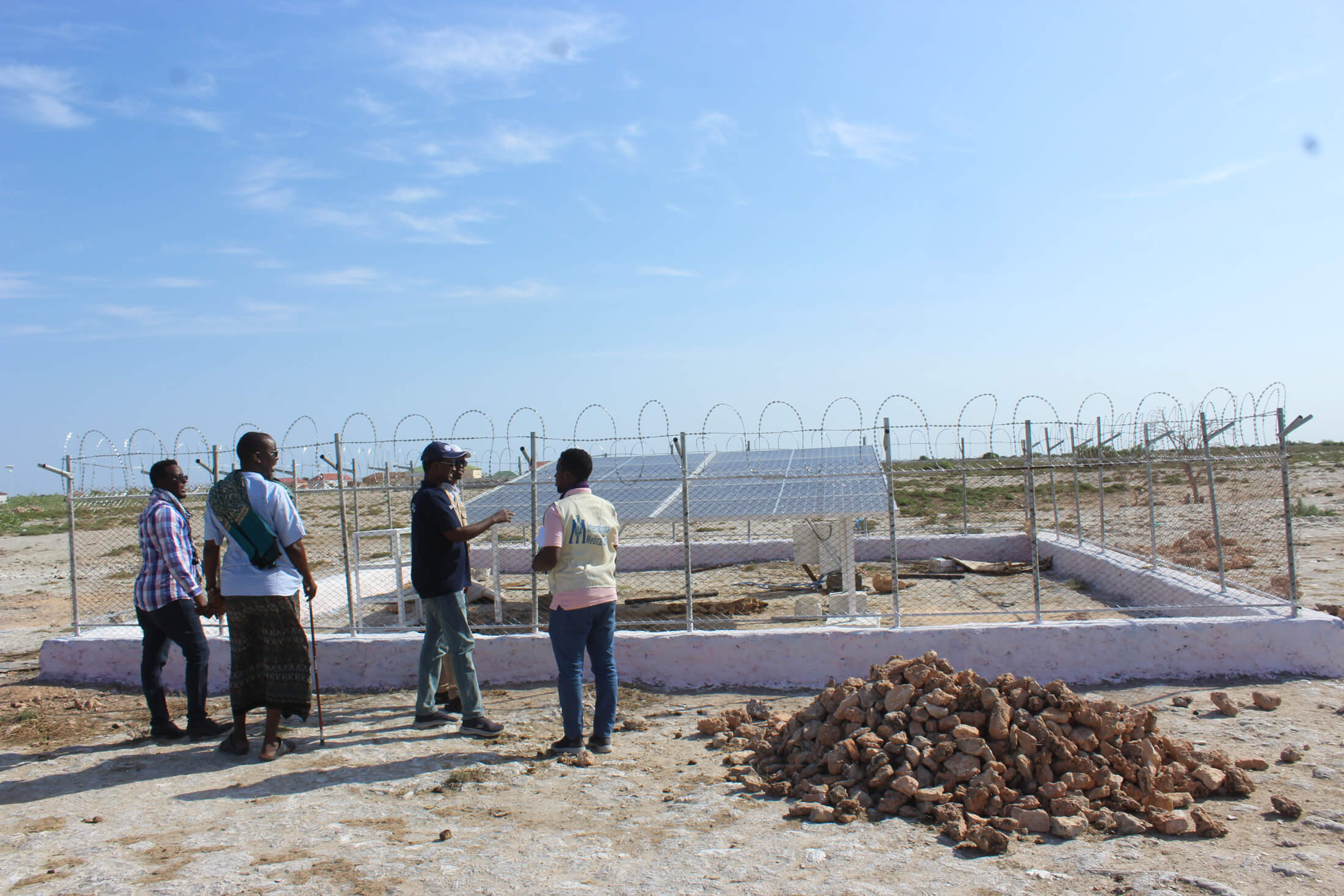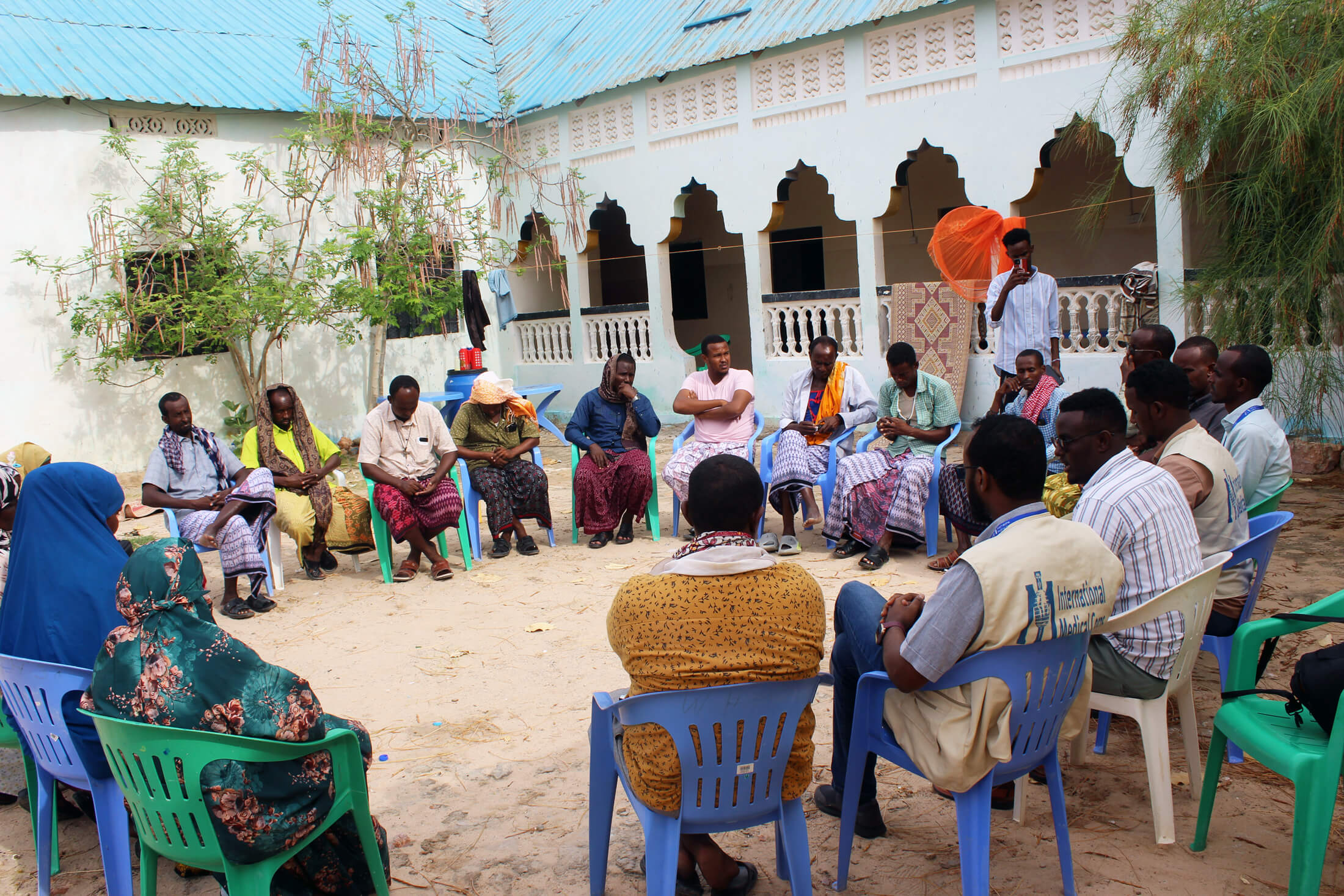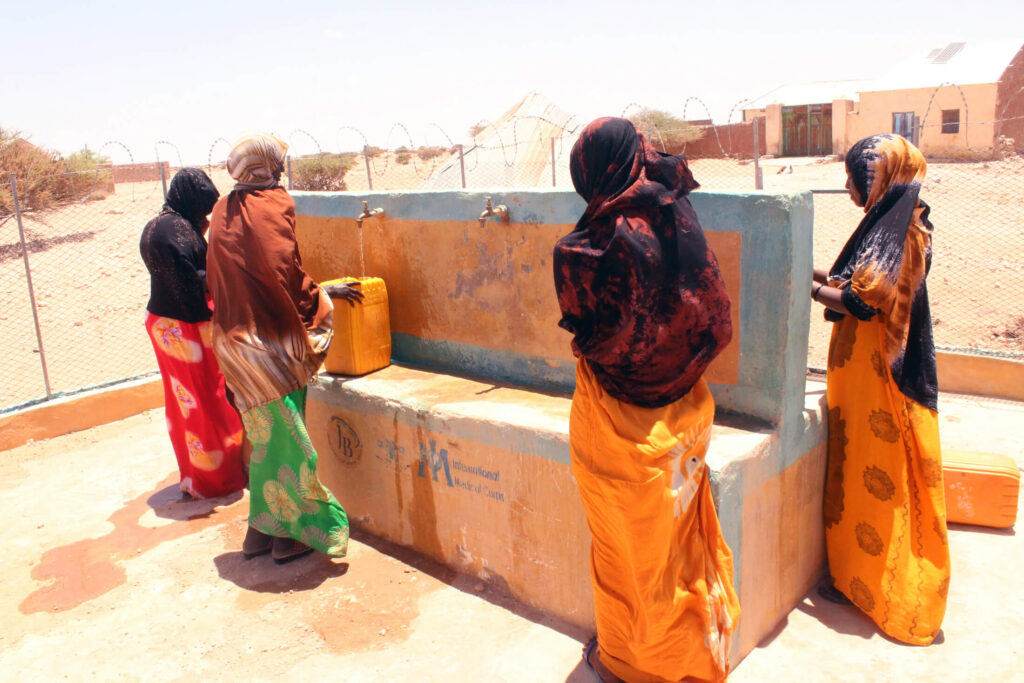Somalia is prone to intense and frequent droughts, storms, floods and heat waves, which cause food, water and livelihoods insecurity, create a rise in water- and vector-borne illnesses and worsen the overall health and well-being of communities. Chronic insecurity and a lack of infrastructure make it hard to overcome these challenges.
Our Water, Sanitation and Hygiene (WASH) team in Somalia is working diligently to mitigate the effects of these events. Though this includes WASH interventions that have been standard practice for many years, the team is also taking new and innovative approaches to ease the effects of natural disasters on the communities that we serve.
Harnessing Solar Power
For example, we’re reducing dependence on fossil fuels and ensuring consistent access to power by harnessing solar energy. Our teams have so far installed solar systems in seven health facilities, several of which provide basic obstetric and neonatal care.
“Thanks to the solar-power system, skilled birth attendants at the Baidoa maternity centre can now provide basic emergency obstetric and newborn care 24/7,” says Medical Coordinator Dr. Mohamed Habibula. “And we’ve seen a 50% reduction in our energy costs.”
Our teams have also made sure that the solar-power systems are strong enough to power air conditioning in three of our pharmacy facilities—preventing medications from spoiling.
To help communities cut costs and increase the availability of potable water, our teams have installed 20 borehole wells where the pumps are solar-powered, and 60 similar shallow wells. Along with these solar-powered wells, we installed water storage tanks that are filled to capacity during the day. The pumps, which we install in pastoral communities—where livestock also need water—also have backup generators to ensure that communities can continually access water, even at night and on cloudy days.

In places where villages are located some distance from the nearest borehole, we often provide trucking services. However, pipelines can provide water to communities at a much lower cost. In one area, we constructed a 20-kilometre pipeline to reach a remote village—lowering water costs from $6 per barrel of water to 30 cents per barrel.
“That’s a huge impact our boreholes are having on the community,” says WASH Coordinator Abdiaziz Haroon.
New Approaches
Easing the effects of natural disasters often requires innovative solutions.
For example, we make sure that our facilities—such as our women’s and girls’ safe space in Galkayo—are better able to withstand heatwaves by installing better ventilation rather than air conditioning.
“The ventilation provides enough air circulation to keep the staff members cool and minimise the development of heat-related illness,” Dr. Mohamed explains.
We have also taken novel approaches to maintaining the safety of groundwater, which is prone to contamination during floods. Contamination can also happen when pollutants, heavy metals and naturally occurring chemical elements enter a water source, or when water is transferred into trucks and transported. Using solar-powered pumps, we lift groundwater into above-ground tanks, where it can undergo water testing and purification. We then install tap stands where people can collect the water. WASH staff members educate communities on hygiene and water purification, and help villages conduct environmental cleanup campaigns.

“Our team makes sure that we have trained local water management committees as well as community hygiene promoters who create awareness of hygienic standards around water storage, and food and water handling along the chain,” says Abdiaziz.
Teams also focus on disseminating messages on such topics as self-care and signs of dehydration through community health promotion activities and by training our frontline staff and community health workers on basic health, maternal and mental health, and other subjects.
Finally, during the intense rainy seasons in Somalia, millions of tons of water evaporate or flow into the Indian Ocean and are wasted because there are no water harvesting techniques available. To preserve water, we’ve introduced water-collection tanks on the roofs of our health facilities. We’ve also taken steps to protect community and health-facility latrines from flooding by installing concrete slabs above flood levels to make sure that rising waters don’t destroy sanitation installations.
“We have seen great results with these interventions,” says Dr. Mohamed.
